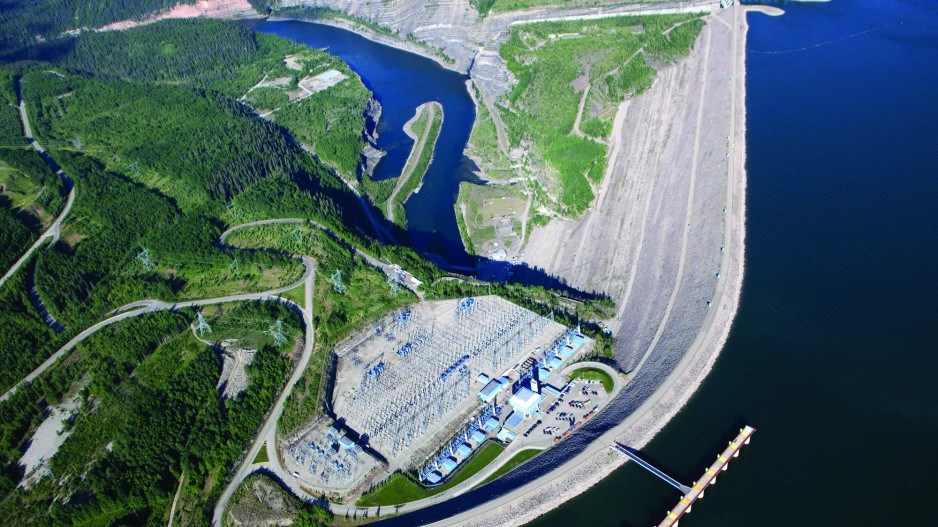Over the next 15 years, Alberta is going to need massive amounts of clean electricity, as it phases out 18 coal-fired power plants.
By 2030, Alberta plans to get 30% of its power from renewable energy with a generating capacity equal to that of several Site C dams.
Just next door, British Columbia already gets 97% of its power from clean, renewable hydroelectric, wind and run-of-river generation and already trades electrons with Alberta, although it hasn’t always been the happiest of relationships.
Alberta also has a serious carbon liability in the oilsands that could benefit from clean power, and B.C. has independent power producers champing at the bit to build new wind and run-of-river projects.
So could B.C. and Alberta partner up to become a regional clean-energy powerhouse, with B.C.’s big hydroelectric dams backstopping intermittent wind and solar power in both B.C. and Alberta?
The short answer is “not likely” – not unless Alberta rethinks its plans to backstop renewables with natural gas thermal power, a move that energy experts say will require an unnecessary overbuild of gas power plants that will be underutilized.
BC Hydro CEO Jessica McDonald, B.C. Energy and Mines Minister Bill Bennett and Clean Energy Canada executive director Merran Smith recently spoke about the potential for B.C. to help Alberta kick its coal habit.
“I think there could be a good synergy between B.C. and Alberta because of our hydro and how we could backstop it,” Smith said.
Alberta’s new NDP government is introducing climate action policies – including a carbon tax – that could go some way toward harmonizing the two provinces’ energy sectors, although it doesn’t address a fundamental difference between Alberta’s deregulated power market and B.C.’s regulated one.
Because wind and solar power are intermittent, and because electricity can’t really be stored in significant volumes, wind and solar need to be backed up with firm power that can be turned on and off when needed.
Alberta is believed to have some of the best wind and solar potential in Canada. It also has an abundance of cheap natural gas. So its plan is to backstop wind and solar with natural-gas-fired thermal power plants.
The problem there is overbuild. Backstopping intermittent power requires an equal amount of firm power. So for every 100 megawatts of wind, solar or run-of-river power built, another 100 megawatts of firm power is needed.
“When you’re not into spring freshet, when the sun isn’t shining and the wind isn’t blowing, you still need the same level of electricity to drive the economy,” Bennett said. “There isn’t the battery technology yet to store that electricity, so they have to have backup. You have to have these plants basically sitting there ready to be fired up.”
Juergen Puetter, CEO of Aeolis Wind Power Corp. – one of B.C.’s wind power pioneers – said it makes little sense to build new gas power plants in Alberta when, just next door, B.C. could use its large hydroelectric dams to provide the firm power Alberta would need.
That would require beefing up interties connecting B.C. and Alberta’s electric utility systems, so Puetter has recently been pitching the B.C. government on revisiting a proposal to build a 500-kilovolt transmission line that would run from the W.A.C. Bennett Dam to Fort McMurray, Alberta.

“The Bennett dam has behind it the largest battery in North America, and it’s not being utilized,” Puetter said. “If you now had a power line of 500-kilovolt level that could transfer 1,000 or more megawatts, the BC Hydro system could be made to balance the Alberta system.”
“The main challenge is not going to be investment in new interties,” Bennett said. “We can co-operate with Alberta on that. If they’re interested, we’re interested.”
Puetter said the project could have a huge selling point for Alberta: electrifying Alberta’s oilsands with clean hydro and wind power from B.C.’s Peace region.
“B.C. is very interested in helping to electrify the oilsands industry,” Bennett said. “If we have to build more generation in the northeast or somewhere in the province, we can.”
But there are significant political and regulatory barriers that would have to come down between Alberta and B.C.
Alberta appears determined to have all of its renewable energy projects built in Alberta. There is some doubt whether Alberta would even be interested in getting power from B.C., whether it is from BC Hydro or independent power producers wanting to build power projects in B.C. for export to Alberta.
And even if Alberta is willing, some industry insiders wonder if Powerex and the BC Utilities Commission might stand in the way.
Powerex – BC Hydro’s trading arm – has historically generated significant revenue for the B.C. government through power arbitrage: buying cheap power at low load times of day from Alberta and then selling power back at peak loads, and at premium prices.
Low gas prices have eaten into those profits in recent years, and some industry players and insiders say Powerex and BC Hydro would resist the idea of allocating capacity from BC Hydro dams to firm up renewables in Alberta because it could negatively affect Powerex’s future trading opportunities.
“That’s been a big problem in the government’s approach up till now,” said Don McInnes, vice-chairman of Vancouver renewable energy developer and operator Alterra Power Corp. (TSX:AXY).
“Hydro has historically been branded as an entity of low-cost energy for generations, but it’s really been used by the provincial government – for decades, not just the current government – as a cash cow.
“Until we make a conscious societal decision about what the role of the utility is, it’s always going to defer – to a large extent – to trying to make money.”




